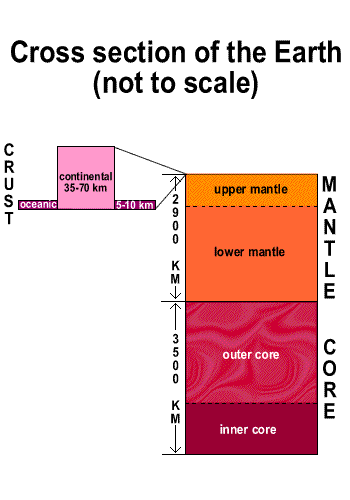
 |
|
|
Geophysics, which studies the physics of the Earth, has led to many significant discoveries about the Earth and its make-up. Seismologic studies of the Earth have uncovered new information about the interior of the Earth that has helped to give credence to plate tectonic theory. 
The next layer is the mantle, which is composed mainly of ferro-magnesium silicates. It is about 2900 km thick, and is separated into the upper and lower mantle. This is where most of the internal heat of the Earth is located. Large convective cells in the mantle circulate heat and may drive plate tectonic processes.
The Earth is separated into layers based on mechanical properties in addition to composition. The topmost layer is the lithosphere, which is comprised of the crust and solid portion of the upper mantle. The lithosphere is divided into many plates that move in relation to each other due to tectonic forces. The lithosphere essentially floats atop a semi-liquid layer known as the asthenosphere. This layer allows the solid lithosphere to move around since the asthenosphere is much weaker than the lithosphere. Structure
of the Earth
Last modified on 8/14/98 by Maggi Glasscoe (scignedu@jpl.nasa.gov)
|